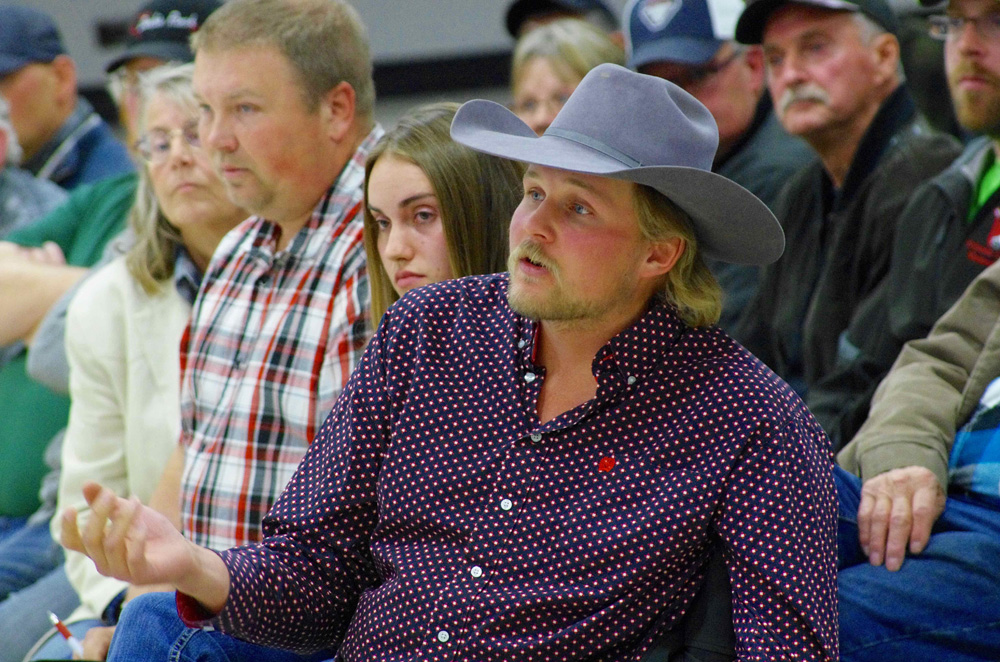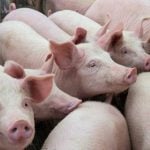Farmers know that sustained production depends on how well they treat their land so it’s in their interest to keep it as healthy as they can.
But what if the land is rented? Are the principles of stewardship practised as well on land that isn’t theirs?
And do landowners understand the benefits of good stewardship practised on their holdings? Are they even interested?
Barry Manikel, a business development consultant with AgCall, put together a program to see if they could find out. Earlier this winter he told the Manitoba Agronomists’ Conference about it.
Read Also

Finally getting paid for sustainable farming?
Alberta project says they might have a line on a workable ecosystem credit model to reward farmers for sustainability, and Manitoba might be next
“Land stewardship is the elephant in the field,” he said. “Everybody knows about it but nobody talks about it. The long-term impact of not addressing this is huge in terms of lost productivity, profitability and value over millions of acres.”
Manikel and AgCall saw value in bringing land stewardship into focus by developing a simplified ‘report card’ that renters and landowners could look at together. Renters could show owners how healthy the land was as a result of their tenure. Owners could use this information to track land health over time and establish both the terms and rates within rental agreements. Perhaps there was value in presenting third-party information to both sides.
“So we thought, let’s take a look and see if there’s something that we could do to support land stewardship and have a good business case,” he said. “They say you can only manage what you can measure and we were looking at ways of measuring land stewardship quantitatively.”
To do that they engaged 25 AgCall associates across Western Canada to sit down with both renters and owners. They needed to know how renters are competing to rent land and would they be up against the highest bid? Are they hemmed in by short-term leases? Is there a way they can demonstrate how well they manage rented land?
They found the main issue for renters was the rental cost and other concerns were a long way down the list. On top of that, the lease terms were getting shorter so renters were having trouble planning long-term investments in land management. They were feeling hemmed in by this and going to shorter rotations to maximize their short-term returns.
“We had a comment that said whoever takes this on has to be one-quarter agronomist and three-quarters marriage counsellor — which speaks to the sensitivity of this topic between the landowners and the land renters,” Manikel said.
“One fellow said only one out of three of my landowners would consider it. The other two out of three were just interested in the money.”
They talked to landowners and asked them if they cared about their land. Did they care if it was being managed in a long-term sustainable manner? Do they see value in monitoring the land management practices applied on their land? They found most landowners were very naive when it came to land stewardship issues. They say land is an investment which is always appreciated regardless of the farmland practices.
“Most of them felt ill equipped to evaluate the renters,” Manikel said. “They did it mostly by driving around looking to see whether the renter had new equipment and shiny paint and he seemed to be making money. Then they seemed to think well, he’s doing it right.”
They found that only landowners with a longtime time horizon showed any interest in land stewardship, so if they were going to hold the land for less than eight years they really didn’t care much. To get a better idea of who owned land they divided them up into five groups.
“The first one is the neighbour who lives in the community and is still connected with the farmland, Manikel said. “We looked at how concerned they were with the land stewardship and I would say they are somewhat concerned.”
Apparently, if they saw good reason to extend the lease terms to accommodate better land stewardship they were generally open to that but were hesitant to reduce the rent. They wanted to get stable income off the land and didn’t want to be losing money compared to other local landlords.
The next group were the distant landowners, inheritors who came from the farm but were now removed by time and distance. They weren’t keen on changing the terms or reducing the rent. This was an annual cheque that they didn’t want to lose.
“For the most part they were unaware of land stewardship and because of that they didn’t see any reason at all to extend any lease terms,” Manikel said. “It was really difficult to get them to understand that they are part of the solution of proper land stewardship and maintaining the productivity of the land.”
Next were private investors and this was strictly a business-to-business discussion. They generally had a 20- to 30-year time horizon so they were more interested in stewardship. They were willing to negotiate lease extension with a farmer who presented a compelling long-term plan.
“They weren’t willing to reduce the rent because they were holding on to the land as an investment and they wanted return on it,” Manikel said. “But they were seen from the renter’s standpoint as people they could actually talk to about land stewardship and their plans.”
First Nations with land holdings were interested in sustainable land management. They spoke of a spiritual connection to the land and, because of that, they were concerned about stewardship and they were willing to discuss it. In some cases they had land managers who were attempting to bring that into play a little bit more.
Last were the organizations that managed land for things like the Canada Pension Plan and other large pension organizations. Their biggest worry is that they wanted to maximize the revenue, maximize the appreciation and minimize the expenses.
“And in a word, if there’s one way of characterizing their approach to land management, it’s ruthless,” Manikel said. “They were writing the lease terms, writing the lease terms to favour them. They were not concerned about land stewardship, they were focused on how we’re going to manage the land to make the most money. Their land managers were typically getting paid a commission on the increase in rent they would get every year.”
Renters generally saw these management companies as a no-win situation and you only rent from them if you absolutely had to. Having said that, there was one notable exception, and that was Manulife Farmland services.
“They take everything into consideration such as climate change, will the renter be a good corporate citizen within their community? How does he treat his employees? Does he support community efforts? Does he buy local?” Manikel said. “A typical stewardship report on one of their land holdings would be 120 pages long and they would interview employees, they would interview suppliers. They do, from what I could see, a great job.”
Ultimately it seems land stewardship is simply not on a landowner’s radar. It’s very complex and not well understood so this is where AgCall’s venture stalled. Although the renters liked the idea, they simply couldn’t get the buy-in from the owners.
“The renters feel that they’re stewardship soldiers but they’re fighting the battle as an army of one and they really felt alone in this discussion,” Manikel said. “Renters need help in communicating and engaging with landowners and engaging means bringing landowners on as partners.”















